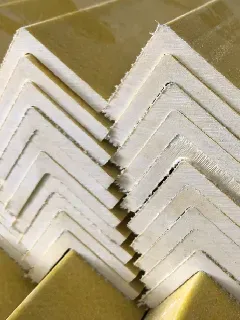loading...
- No. 9, Xingyuan South Street, Dongwaihuan Road, Zaoqiang County, Hengshui, Hebei, China
- admin@zjcomposites.com
- +86 15097380338
- Welcome to visit our website!
frp sheet piling
The Advantages and Applications of FRP Sheet Piling
Fiber-Reinforced Polymer (FRP) sheet piling has emerged as a revolutionary solution in the field of civil engineering and construction, offering many benefits over traditional materials. As a lightweight and durable alternative, FRP sheet piling is increasingly being utilized in various applications ranging from waterfront projects to retaining walls.
What is FRP Sheet Piling?
FRP sheet piling is constructed from strong composite materials, typically consisting of plastic reinforced with glass fibers. This combination produces a product that is both lightweight and incredibly strong, making it ideal for applications that require structural integrity and resistance to environmental stressors.
Advantages of FRP Sheet Piling
1. Corrosion Resistance One of the primary advantages of using FRP sheet piling is its exceptional resistance to corrosion. Unlike traditional steel piles, which can rust and weaken over time due to exposure to water and chemicals, FRP materials do not corrode. This makes them particularly suitable for marine environments or areas with high chemical exposure, significantly extending their lifespan and reducing maintenance costs.
2. Lightweight and High Strength FRP sheet piling is much lighter than traditional steel or concrete alternatives, allowing for easier handling and installation. The reduced weight also means that less heavy machinery is required for transportation and placement, further lowering project costs. Despite its lightness, FRP offers outstanding strength, making it a reliable choice for supporting structures.
3. Environmental Sustainability As sustainability becomes an increasingly important consideration in construction, FRP sheet piling stands out as an eco-friendly option. These materials are often produced from recycled plastics and can be fully recycled at the end of their life cycle. Furthermore, their long lifespan and reduced need for maintenance contribute to a lower environmental impact.
4. Versatility in Design FRP sheet piling can be manufactured in a variety of shapes, sizes, and colors. This versatility allows engineers and architects to customize designs to meet specific project requirements while enhancing aesthetic appeal. Whether used in retaining walls or as cofferdams for construction, the flexibility of FRP makes it a valuable resource in diverse building applications.
frp sheet piling

5. Low Thermal Conductivity Another notable advantage of FRP materials is their low thermal conductivity. This property makes them less susceptible to temperature fluctuations, reducing the risk of thermal expansion or contraction issues that can affect the integrity of structures made from metals.
Applications of FRP Sheet Piling
The use of FRP sheet piling spans across various industries and applications. Some key areas include
- Waterfront Projects FRP sheet piling is ideal for marine applications such as docks, wharfs, and seawalls. Its corrosion resistance ensures long-term durability in harsh water environments and helps protect coastal areas from erosion.
- Retaining Walls In construction projects where soil stability is crucial, FRP sheet piling can be employed as an effective retaining wall solution. Its strength and resistance to water-related deterioration allow for reliable support structures that prevent soil collapse.
- Bridges and Infrastructure FRP materials are increasingly being used in bridge construction and other infrastructural projects. Their lightweight nature reduces the overall load on supporting structures, while their resistance to corrosion ensures longevity.
- Landfill and Waste Management In waste management applications, FRP sheet piling forms barriers that prevent leachate from contaminating surrounding soil and water sources, ensuring environmental protection.
Conclusion
In summary, FRP sheet piling offers a multifaceted solution for various construction and civil engineering challenges. Its lightweight, corrosion-resistant nature, along with its sustainability and design versatility, make it a material of choice for modern construction practices. As the industry moves towards more sustainable and durable solutions, the adoption of FRP sheet piling is expected to rise, paving the way for safer and more efficient infrastructure projects in the future.
-
GRP Structures: The Future of Lightweight, High-Performance EngineeringNewsJun.20,2025
-
FRP Water Tank: High-Performance Storage for Corrosive and Clean Water SystemsNewsJun.20,2025
-
FRP Square Tube: The New Industry Standard for Chemical and Structural ApplicationsNewsJun.20,2025
-
FRP Pultruded Profiles: The Ultimate Choice for Lightweight Structural StrengthNewsJun.20,2025
-
FRP Handrails: The Safer, Smarter, and Stronger Choice for Modern InfrastructureNewsJun.20,2025
-
FRP Grating: The Smart Solution for Durable, Lightweight Industrial FlooringNewsJun.20,2025
-
Why Choose a Galvanized Water Tank for Your Storage NeedsNewsMay.21,2025
